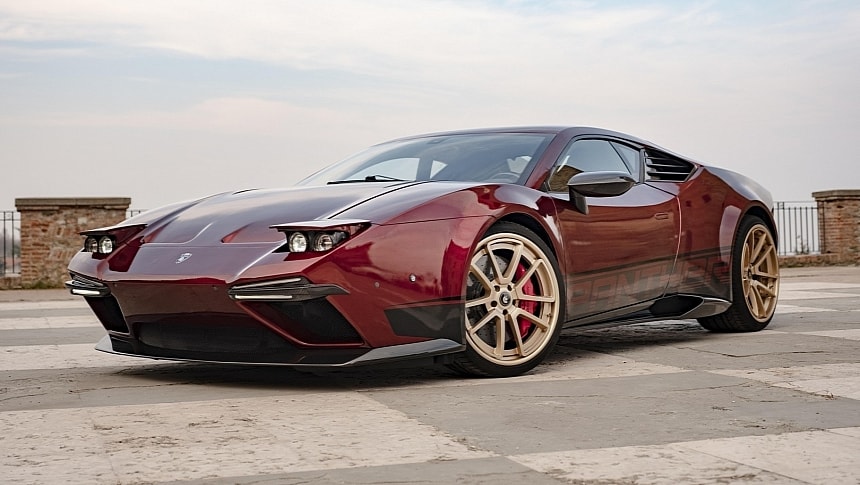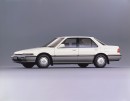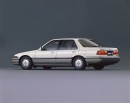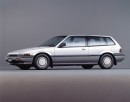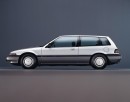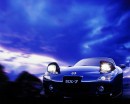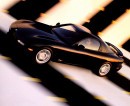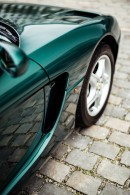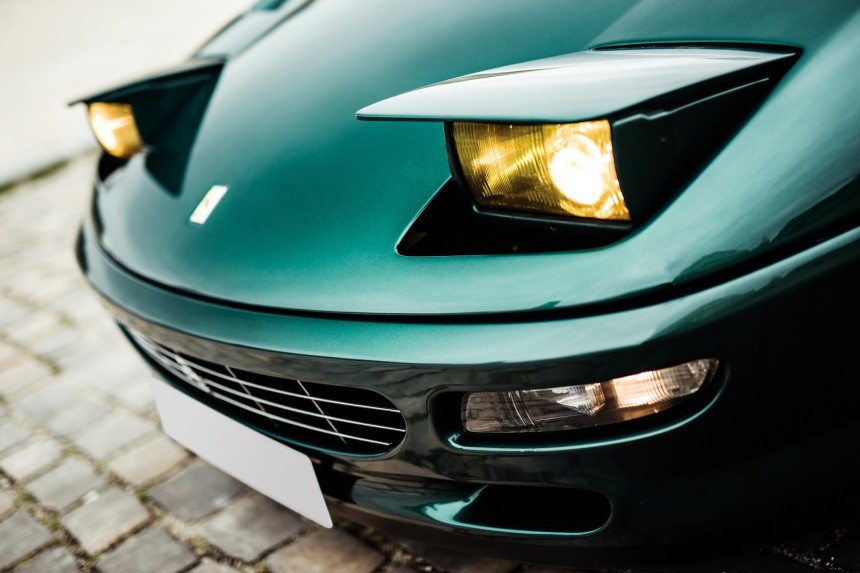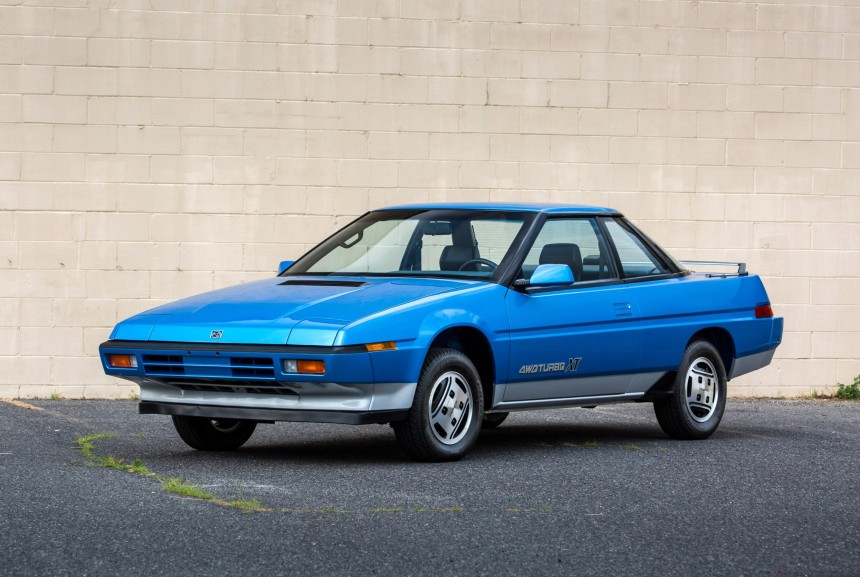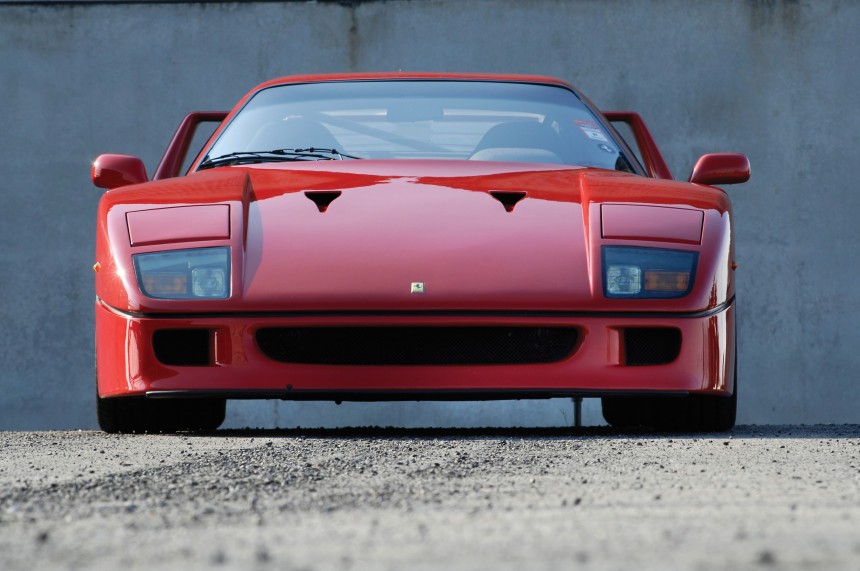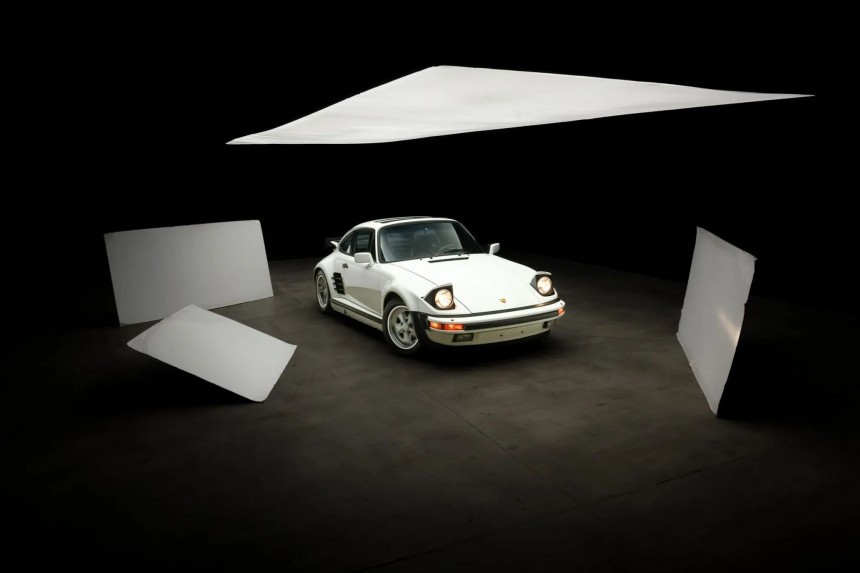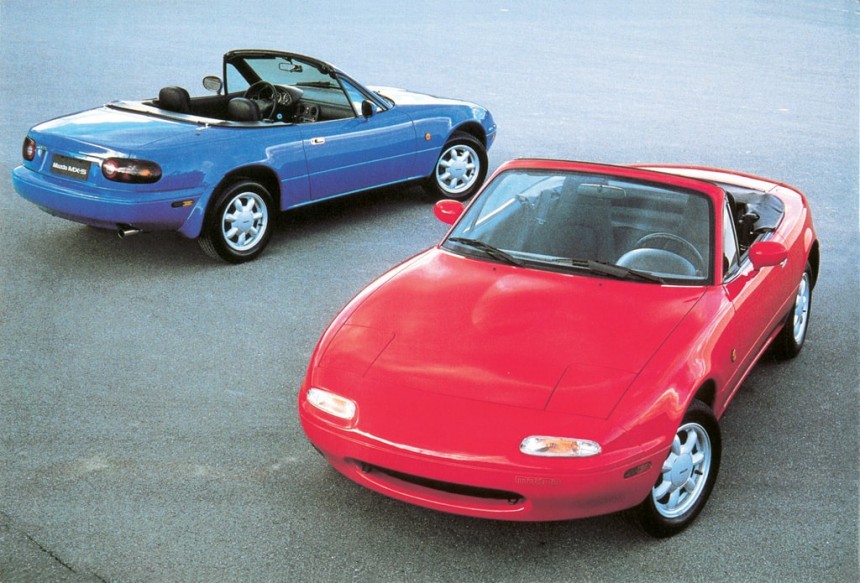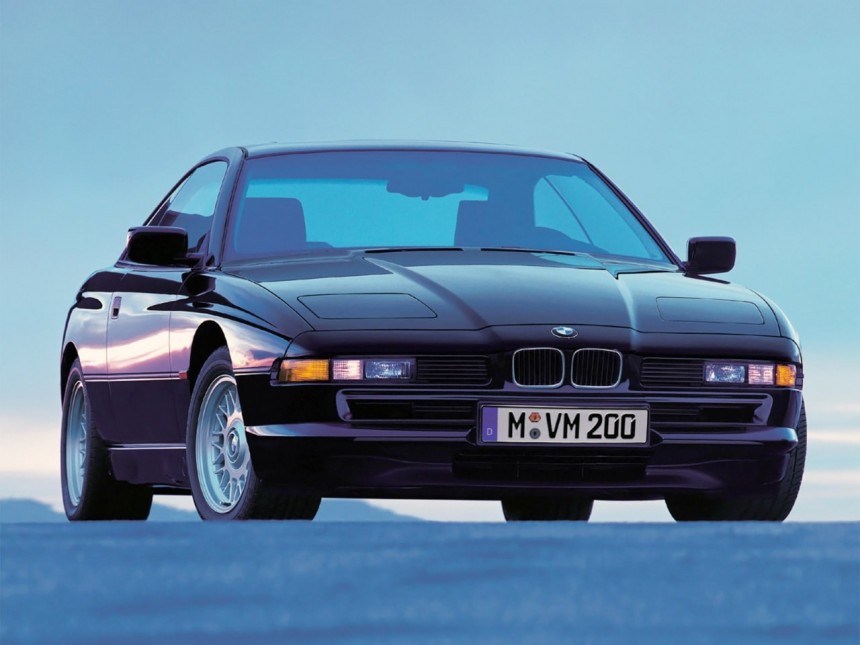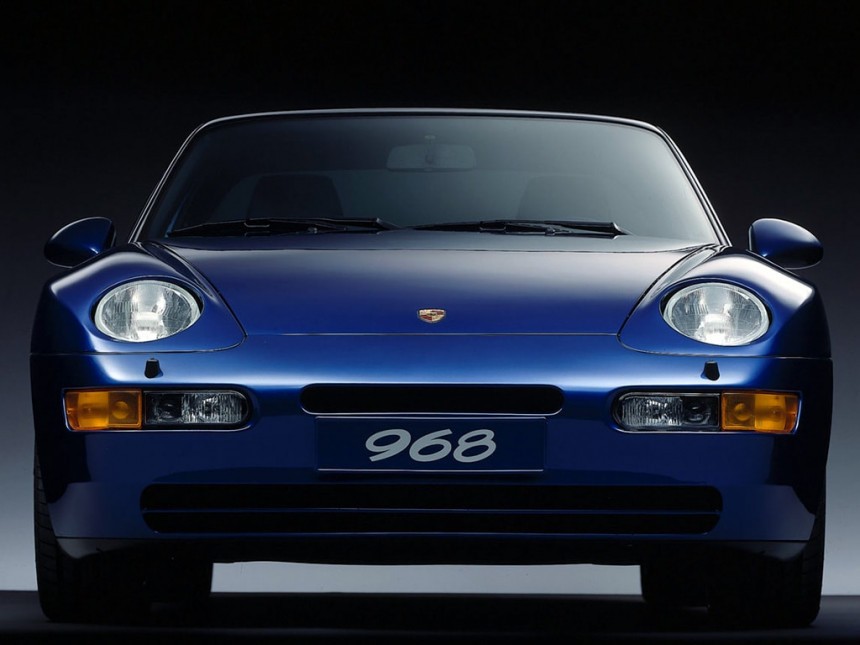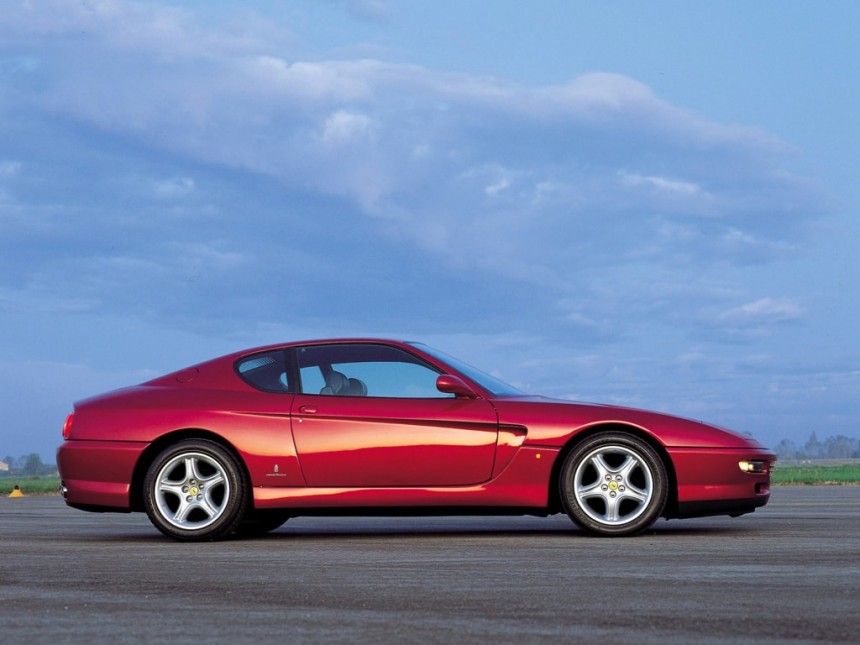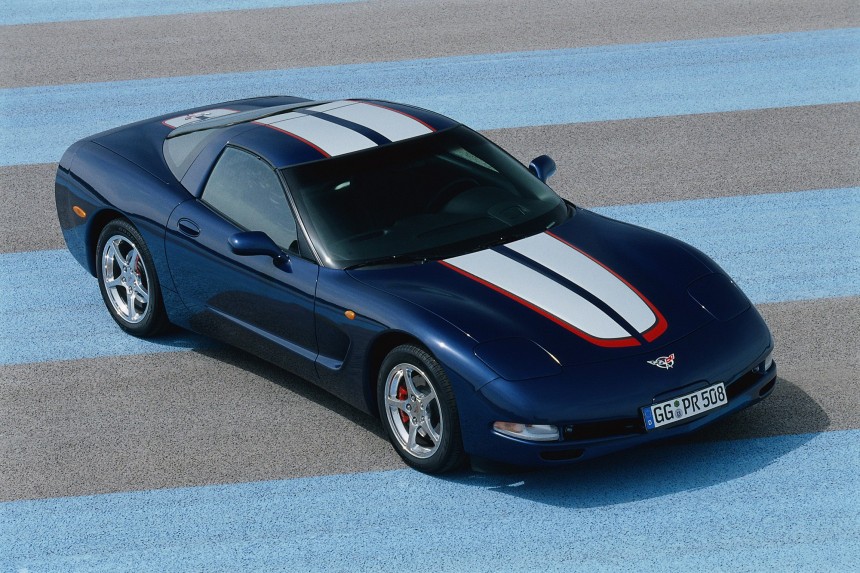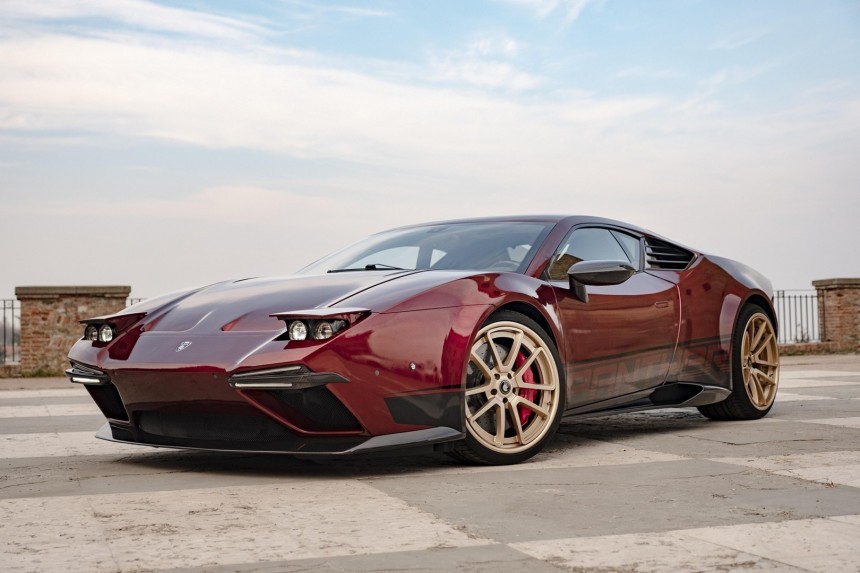You might think the pop-up headlight is a thing of the 80s, but we can trace its roots back to the 1930s, actually. Cord is credited with rolling out the world's first series-production automobile with flip-up headlights, that car being the Cord 810 from 1936.
More appropriately referred to as hidden headlights due to multiple ways of concealing the front lights, the pop-up headlights entered the mainstream with the 1942 DeSoto. Before going any further, it's worth mentioning that headlights and headlamps mean different things. Be that as it may, most car enthusiasts and those with less inclination for all things cars prefer using headlights over headlamps.
Way cooler than fixed headlights, hideaway headlights first saw mass-market adoption in the 1960s in the United States of America due to regulations that mandated sealed-beam headlights of lower intensity than the H1 halogen bulbs used in the Old Continent during that period. How much lower? As far as the high beams are concerned, the numbers were 37,500 candela per side in the US versus 140,000 in Europe.
The limit was raised to 75,000 candela in 1978, paving the way for halogen bulbs for model year 1979. Replaceable bulb headlights were permitted in 1983, but many automakers from both the United States of America and outside its borders continued designing cars with flip-eye headlights.
How come? To understand why the most iconic automobiles from the 1980s came with hidden headlights, bear in mind that the 1983 amendment of Federal Motor Vehicle Safety Standard 108 brought US headlight regulations closer to Europe's internationalized standards. Nonstandard-shape headlights with replaceable bulbs were a big upgrade from the previous round and rectangular sealed-beam headlights, yet the previous designs made more sense in terms of production costs.
Not for long, though, because fixed headlights slowly but steadily replaced pop-up headlights due to fuel economy regulations and the pronounced shift from slab-sided styling to more aerodynamically-conscious body panels. Ford's jelly-bean design language comes to mind, beginning with the 1986 Ford Taurus.
Even though the 1980s marked the beginning of the end for pop-up headlights, the Decade of Greed gave us a plethora of sports cars and affordable daily drivers with hidden headlights. To a lesser degree, the 1990s as well. That said, let's go through five representative cars from each decade.
The only Subaru with pop-up headlights launched in 1985 with front- and all-wheel drive under the XT nameplate. Alternatively known as the Alcyone in Japan and the Vortex in Australia, the wedge-shaped 2+2 coupe is more than meets the eye.
Sold in just under 100,000 units through 1991, the XT was rather unconventional in many respects, beginning with its height-adjustable pneumatic suspension. Citroen, anyone? The instrument cluster tilting with the steering column also deserves a shout-out, along with the flush door handles and 22-inch-long windshield wiper.
Op-art upholstery and an interior with design influences from the aircraft industry also made the XT a unique proposition in the segment. The XT would be replaced by the Giugiaro-styled SVX, which leveled up from the 2.7-liter boxer of the XT6 to a 3.3-liter unit. Fewer than 25,000 units were made, of which 14,257 were sold in the US.
Not as valuable as the 250 GTO, nor as close to the world of Formula 1 as the F50, the F40 is often described as Enzo's final masterpiece. In truth, the twin-turbo V8 thriller that came out four decades after the first model to bear the Ferrari name was the last-ever Fezza to be personally approved by the man who founded Scuderia Ferrari in 1929.
The limited-run supercar is regarded as the definitive Italian exotic from the 1980s. Only the Porsche 959 can be considered a true contemporary rival, a tech-laden bruiser that provided the basis for Porsche's first-ever 911 with all-wheel drive.
Penned by Pietro Camardella at Pininfarina, the F40 was greenlit on June 10, 1986 and revealed thirteen months later. Il Commendatore would breathe his last breath on August 14, 1988 at the age of 90.
Crowned Car of the Year Japan in 1985, the third-generation Accord also happens to be the only Accord with retractable headlights. Marketed as the Accord CA in the Land of the Rising Sun, this fellow uses double wishbones fore and aft.
The first series-production Honda with double-wishbone suspension all around was miles above the competition, which relied on MacPherson struts. All versions came with front sway bars, with rear sway bars exclusive to upper-end specifications.
Available as a two-door coupe, three-door hatchback, a shooting brake dubbed AeroDeck, and as a four-door sedan, the CA-series Accord was offered with 1.6- to 2.0-liter powerplants and a choice between four-speed automatic and five-speed manual. Sold alongside the premium-oriented Vigor for the Japanese market, the third-gen Accord was produced for model years 1986 to 1989.
The 930-series 911 Turbo entered production in 1975, but the Flachbau package would have to wait until 1981. Colloquially referred to as the Slantnose or Flatnose, the rear-engined sports car spawned 948 copies through 1989 over three generations.
If you know your Porsches well, then you probably know that Mansour Ojjeh of TAG Heuer fame commissioned the German automaker to develop a road car with the looks of the race-winning 935. The Zuffenhausen-based manufacturer resurrected the 935 as a special edition in 2019 on the 991.2 Porsche 911 GT2 RS, which still is the most powerful Neunelfer of them all at press time.
Produced in 77 units, the second-gen 935 belts out a stirring 700 metric ponies or 691 horsepower in old money. Similar to the endurance racer from the 1970s and 1980s, the second generation isn't road-legal. The 930 Flachbau is, though, and these babies command high prices in today's market.
Certified as the world's best-selling two-seater sports car by Guinness World Records in 2000, the MX-5 Miata celebrated the millionth example of the breed in 2016. The question is, why did Mazda's rear-drive roadster proved such a big hit? It's hard to come up with a straightforward answer, but in essence, the MX-5 Miata is the closest thing to a 1960s sports car. In particular, the universally acclaimed first-generation Lotus Elan (a.k.a. the M100).
Both the first gen and the front-wheel-drive second generation of the Elan feature pop-up headlights, and – not surprising in the least – Mazda preferred this design over fixed headlights. The kicker is that Mazda's plucky little sports car outsold the second-gen Elan by a tremendous margin: 431,506 units compared to a disappointing 3,855 units.
On the flip side, Mazda discontinued pop-up headlights well before the British automaker did. The final Lotus with said headlight setup is the Esprit, which totaled 10,675 deliveries between 1976 and 2004. General Motors ended C5 Corvette production in 2004 as well, with the sixth generation switching to fixed headlights.
A very different machine from any BMW from the early 1990s, the first-generation 8 Series was conceived in the 1980s. The project was approved by the board of directors in 1981, the design was locked in back in 1986, and the finished car was revealed in September 1989 for model year 1990 at the Frankfurt Motor Show (a.k.a. the IAA).
Replacing the 6 Series, the 8er flopped hard due to its relatively high starting price. A meager 30,609 were delivered globally, of which the United States market accounted for 6,920 deliveries. The first production car with a V12 mated to a six-speed manual could also be had with a V8 and an automatic. Still, the V12 proved far more popular, with 850 production totaling 22,800 units.
Speaking of twelve cylinders arranged in a V, the V12 in question was developed into the S70/2 of the McLaren F1. The British legend's engine has an indirect successor in the form of the Cosworth GMA, which spins to 12,100 revolutions per minute in the Gordon Murray Automotive T.50. As for the Munich-based automaker, BMW will end V12 production by decade's end in favor of electric drive units for next-generation Rolls-Royce models.
Porsche was facing tremendous financial difficulties in the late 1980s and early 1990s, so much so that Porsche adopted Japanese lean manufacturing techniques from Toyota and Honda in order to make ends meet. The first-gen Boxster and 996-series 911 were the first Porkers to be produced using lean manufacturing techniques.
During this period, Zuffenhausen's favorite son worked its magic on the 944 to create the 968. More or less a stopgap between the outgoing 944 and the 986-series Boxster, the front-engined 968 was a contemporary of both the 964- and 993-series 911. The subsequent 996 introduced a brand-new platform and a water-cooled engine whose biggest weak point is the intermediate shaft bearing.
Porsche's last front-engined production model before the Cayenne, the 986 was originally intended to bear the 944 S3 nameplate. Because 80 percent of the mechanical bits were modified or redesigned from the ground up during development, Porsche decided on the 986 moniker rather than 944 S3. The air-cooled 993 may sport a 986-like front end, but Porsche couldn't make a case for the exposed pop-up headlights introduced by the V8-powered 928.
Although not the first production rotary car, the RX-7 went on to become the best-selling rotary car in history. All three generations feature pop-up headlights, and the one that resonates with auto enthusiasts most is – of course – the third one.
Codenamed FD3S for the Japanese market or JM1FD for American models, the FD is a sequential twin-turbo affair that makes anything between 255 ps and 280 ps (252 to 272 hp). A bit conservative for a twin-rotor engine with a couple of turbos, but remember that Mazda couldn't give it more than 280 metric ponies due to a gentlemen's agreement that we covered in great detail in a previous article.
Said agreement also limits the top speed of JDM vehicles to 180 kilometers per hour or 112 miles per hour, a self-imposed limitation that hampers the most powerful JDM car in production as of 2024, that car being the 2025 Nissan GT-R. The R35's electronic speed limiter is connected to the satellite navigation system, which is programmed to disable said limiter on racing circuits such as Suzuka.
Stupidly beautiful even by 2024 standards, the 456 was the last Fezza to use hidden headlights. It also introduced the F116 engine, which Ferrari renamed F133 for the 550 Maranello and subsequent 575 and 612 series. The F116 harks back to the Dino V6 and V8 engine families thanks to its oversquare design and 65-degree angle between the cylinder banks.
Available with either a six-speed manual or a torque-converter automatic, the 456 was updated in 1998 to Modificata specification. The 456M's exterior styling is credited to Ken Okuyama, the Japanese designer who also designed the first-gen Honda NSX, Maserati Quattroporte V, Ferrari 612 Scaglietti, and the F50-replacing Ferrari Enzo.
The 456 succeeded the 412i, with the Prancing Horse producing an estimated 3,289 units. Both the 456 and the facelifted 456M were advertised under the GT and GTA handles, with the A in GTA standing for the four-speed automatic transmission. The following 612 Scaglietti upgraded to an automated manual, then the FF to a dual-clutcher.
The fifth-generation Corvette also revived the Z06 moniker. Not only did it outperform the C4 ZR1 in every imaginable way save for maximum speed, but the C5-generation Z06 was far more capable than any previous road-going Corvette on the track. Originally rated at 385 horsepower, the C5 Z06 was bumped up to 405 ponies for model year 2002.
Regardless of version, the C5's party piece was the Generation III small-block V8. The LS1 would continue to be used through 2005 by the Holden Monaro and Statesman in Australia, whereas the LS6 was shared with the Cadillac CTS-V.
Flip-up lights became nigh-on impossible to justify after ECE regulations introduced pedestrian protection provisions preventing protuberances from the body of the vehicle. Considering that hidden headlights are more complex, more prone to malfunctioning, and pricier to repair than their fixed counterparts, it should come as no surprise that automakers bade farewell to this design in 2004.
Pop-up headlights are not illegal at the time of writing, yet complying with current regulations is tricky and prohibitively expensive to boot. Ares Modena keeps the hidden headlight alive with the Panther ProgettoUno, a De Tomaso Pantera-styled boutique supercar flaunting Lamborghini Huracan underpinnings and a dual-clutch transmission with an electro-actuated gated shifter.
But which pop-up headlights decade is better between the '80s and '90s? That's a matter of personal taste compounded by nostalgia. Putting it differently, it's like choosing between peanut butter and Nutella. Still, ask yourself the following question: would you prefer a Ferrari F40 or a 456 in the garage? Yours truly would much prefer both, with the 456 as the daily driver and the F40 for the occasional weekend blast on a winding road.
Way cooler than fixed headlights, hideaway headlights first saw mass-market adoption in the 1960s in the United States of America due to regulations that mandated sealed-beam headlights of lower intensity than the H1 halogen bulbs used in the Old Continent during that period. How much lower? As far as the high beams are concerned, the numbers were 37,500 candela per side in the US versus 140,000 in Europe.
The limit was raised to 75,000 candela in 1978, paving the way for halogen bulbs for model year 1979. Replaceable bulb headlights were permitted in 1983, but many automakers from both the United States of America and outside its borders continued designing cars with flip-eye headlights.
Not for long, though, because fixed headlights slowly but steadily replaced pop-up headlights due to fuel economy regulations and the pronounced shift from slab-sided styling to more aerodynamically-conscious body panels. Ford's jelly-bean design language comes to mind, beginning with the 1986 Ford Taurus.
Even though the 1980s marked the beginning of the end for pop-up headlights, the Decade of Greed gave us a plethora of sports cars and affordable daily drivers with hidden headlights. To a lesser degree, the 1990s as well. That said, let's go through five representative cars from each decade.
Subaru XT (1985–1991)
Sold in just under 100,000 units through 1991, the XT was rather unconventional in many respects, beginning with its height-adjustable pneumatic suspension. Citroen, anyone? The instrument cluster tilting with the steering column also deserves a shout-out, along with the flush door handles and 22-inch-long windshield wiper.
Op-art upholstery and an interior with design influences from the aircraft industry also made the XT a unique proposition in the segment. The XT would be replaced by the Giugiaro-styled SVX, which leveled up from the 2.7-liter boxer of the XT6 to a 3.3-liter unit. Fewer than 25,000 units were made, of which 14,257 were sold in the US.
Ferrari F40 (1987–1992)
The limited-run supercar is regarded as the definitive Italian exotic from the 1980s. Only the Porsche 959 can be considered a true contemporary rival, a tech-laden bruiser that provided the basis for Porsche's first-ever 911 with all-wheel drive.
Penned by Pietro Camardella at Pininfarina, the F40 was greenlit on June 10, 1986 and revealed thirteen months later. Il Commendatore would breathe his last breath on August 14, 1988 at the age of 90.
Honda Accord Gen 3 (1985–1989)
The first series-production Honda with double-wishbone suspension all around was miles above the competition, which relied on MacPherson struts. All versions came with front sway bars, with rear sway bars exclusive to upper-end specifications.
Available as a two-door coupe, three-door hatchback, a shooting brake dubbed AeroDeck, and as a four-door sedan, the CA-series Accord was offered with 1.6- to 2.0-liter powerplants and a choice between four-speed automatic and five-speed manual. Sold alongside the premium-oriented Vigor for the Japanese market, the third-gen Accord was produced for model years 1986 to 1989.
Porsche 930 Flachbau (1981–1989)
If you know your Porsches well, then you probably know that Mansour Ojjeh of TAG Heuer fame commissioned the German automaker to develop a road car with the looks of the race-winning 935. The Zuffenhausen-based manufacturer resurrected the 935 as a special edition in 2019 on the 991.2 Porsche 911 GT2 RS, which still is the most powerful Neunelfer of them all at press time.
Produced in 77 units, the second-gen 935 belts out a stirring 700 metric ponies or 691 horsepower in old money. Similar to the endurance racer from the 1970s and 1980s, the second generation isn't road-legal. The 930 Flachbau is, though, and these babies command high prices in today's market.
Mazda MX-5 Miata NA (1989–1997)
Both the first gen and the front-wheel-drive second generation of the Elan feature pop-up headlights, and – not surprising in the least – Mazda preferred this design over fixed headlights. The kicker is that Mazda's plucky little sports car outsold the second-gen Elan by a tremendous margin: 431,506 units compared to a disappointing 3,855 units.
On the flip side, Mazda discontinued pop-up headlights well before the British automaker did. The final Lotus with said headlight setup is the Esprit, which totaled 10,675 deliveries between 1976 and 2004. General Motors ended C5 Corvette production in 2004 as well, with the sixth generation switching to fixed headlights.
BMW 8 Series E31 (1990–1999)
Replacing the 6 Series, the 8er flopped hard due to its relatively high starting price. A meager 30,609 were delivered globally, of which the United States market accounted for 6,920 deliveries. The first production car with a V12 mated to a six-speed manual could also be had with a V8 and an automatic. Still, the V12 proved far more popular, with 850 production totaling 22,800 units.
Speaking of twelve cylinders arranged in a V, the V12 in question was developed into the S70/2 of the McLaren F1. The British legend's engine has an indirect successor in the form of the Cosworth GMA, which spins to 12,100 revolutions per minute in the Gordon Murray Automotive T.50. As for the Munich-based automaker, BMW will end V12 production by decade's end in favor of electric drive units for next-generation Rolls-Royce models.
Porsche 968 (1991–1995)
During this period, Zuffenhausen's favorite son worked its magic on the 944 to create the 968. More or less a stopgap between the outgoing 944 and the 986-series Boxster, the front-engined 968 was a contemporary of both the 964- and 993-series 911. The subsequent 996 introduced a brand-new platform and a water-cooled engine whose biggest weak point is the intermediate shaft bearing.
Porsche's last front-engined production model before the Cayenne, the 986 was originally intended to bear the 944 S3 nameplate. Because 80 percent of the mechanical bits were modified or redesigned from the ground up during development, Porsche decided on the 986 moniker rather than 944 S3. The air-cooled 993 may sport a 986-like front end, but Porsche couldn't make a case for the exposed pop-up headlights introduced by the V8-powered 928.
Mazda RX-7 FD (1991–2002)
Codenamed FD3S for the Japanese market or JM1FD for American models, the FD is a sequential twin-turbo affair that makes anything between 255 ps and 280 ps (252 to 272 hp). A bit conservative for a twin-rotor engine with a couple of turbos, but remember that Mazda couldn't give it more than 280 metric ponies due to a gentlemen's agreement that we covered in great detail in a previous article.
Said agreement also limits the top speed of JDM vehicles to 180 kilometers per hour or 112 miles per hour, a self-imposed limitation that hampers the most powerful JDM car in production as of 2024, that car being the 2025 Nissan GT-R. The R35's electronic speed limiter is connected to the satellite navigation system, which is programmed to disable said limiter on racing circuits such as Suzuka.
Ferrari 456 (1992–2003)
Available with either a six-speed manual or a torque-converter automatic, the 456 was updated in 1998 to Modificata specification. The 456M's exterior styling is credited to Ken Okuyama, the Japanese designer who also designed the first-gen Honda NSX, Maserati Quattroporte V, Ferrari 612 Scaglietti, and the F50-replacing Ferrari Enzo.
The 456 succeeded the 412i, with the Prancing Horse producing an estimated 3,289 units. Both the 456 and the facelifted 456M were advertised under the GT and GTA handles, with the A in GTA standing for the four-speed automatic transmission. The following 612 Scaglietti upgraded to an automated manual, then the FF to a dual-clutcher.
C5 Corvette (1996–2004)
As mentioned a few paragraphs earlier, the C5 was the final Corvette with pop-up headlights. A major change from the long-running C4 was the perimeter frame with hydroformed steel tubes, along with the longer wheelbase (by 8 inches) and wider tracks (by 4 inches in the front and 2 inches for the rear axle).The fifth-generation Corvette also revived the Z06 moniker. Not only did it outperform the C4 ZR1 in every imaginable way save for maximum speed, but the C5-generation Z06 was far more capable than any previous road-going Corvette on the track. Originally rated at 385 horsepower, the C5 Z06 was bumped up to 405 ponies for model year 2002.
Regardless of version, the C5's party piece was the Generation III small-block V8. The LS1 would continue to be used through 2005 by the Holden Monaro and Statesman in Australia, whereas the LS6 was shared with the Cadillac CTS-V.
Flip-up lights became nigh-on impossible to justify after ECE regulations introduced pedestrian protection provisions preventing protuberances from the body of the vehicle. Considering that hidden headlights are more complex, more prone to malfunctioning, and pricier to repair than their fixed counterparts, it should come as no surprise that automakers bade farewell to this design in 2004.
Pop-up headlights are not illegal at the time of writing, yet complying with current regulations is tricky and prohibitively expensive to boot. Ares Modena keeps the hidden headlight alive with the Panther ProgettoUno, a De Tomaso Pantera-styled boutique supercar flaunting Lamborghini Huracan underpinnings and a dual-clutch transmission with an electro-actuated gated shifter.
But which pop-up headlights decade is better between the '80s and '90s? That's a matter of personal taste compounded by nostalgia. Putting it differently, it's like choosing between peanut butter and Nutella. Still, ask yourself the following question: would you prefer a Ferrari F40 or a 456 in the garage? Yours truly would much prefer both, with the 456 as the daily driver and the F40 for the occasional weekend blast on a winding road.
